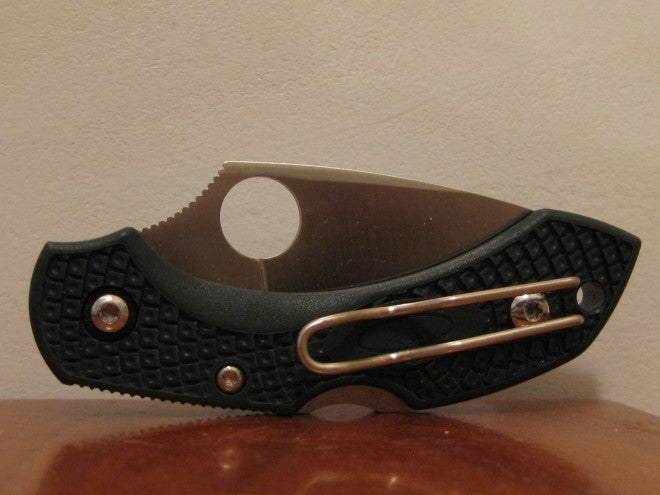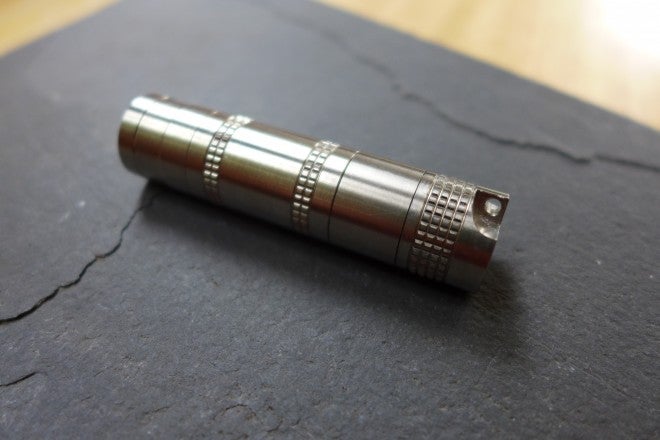EDC Recommendations Under $200
Tony Sculimbrene 12.26.13

At $200, one doesn’t have to compromise to get both a great knife and light. The market forces conspire against you when you’re looking for a $50 knife. There are so many great blades that are just $10 more, that the $50 price point is actually something of a challenge. With $100 to spend, you basically have your pick of any production knife without crazy bling or premium materials. You won’t land a ZT0888 (even if you had the money you probably couldn’t score that knife, but that is an entirely different issue), but you can find many high quality items.
To see more from this series, check out EDC recommendations under $100 and EDC recommendations under $50.
Knife: Spyderco Dragonfly II with FRN handles and ZDP-189 steel
There is a lot of competition here–the Mini Grip, the Delica, the S30V Leek, to name a few–but very few knives at this price point offer steel equal to ZDP-189. This is usually a steel reserved for the next pricing tier. You can get a Delica in ZDP-189 for under $100, but the ergonomics on the Dragonfly are leagues better than the ergonomics on the Delica. There has never been an EDC situation when I wanted more knife than the Dragonfly II provided. Honestly, blades bigger than 3 inches are just wildly impractical. The weight is an issue. The legal stuff is an issue. And I think we all understand, at least intuitively, that you have less control over bigger blades.
For me, the roughly 2.5 inch blade on the Dragonfly II is really the sweet spot in terms of size. I can slice veggies, cut open packages, and still perform delicate precision cuts, like slicing out a newspaper article or cutting around a item in a clam shell pack (which can be an infuriating task).
Draping your pointer finger over the hump on the Dragonfly basically makes that thing a scalpel. It really, really works. The clip on the Dragonfly II is, in my opinion, very close to perfect. It is over-the-top carry, very light, and very strong. Some of the wire clips from Spyderco, like those found on the Caly 3 and the Techno, seem to wiggle a lot. The wire clip on the Dragonfly II is more stout and locks in place. The Dragonfly II is also as light as you probably ever really need, clocking in at 1.2 ounces. There are a few varieties of Dragonflies, including a fancy Nishijin scale version, but out of all of them, the ZDP-189/FRN model is the one to get–plenty of performance without being too fancy.
Oh, and the price is just right: roughly $60 on the street. Normally I don’t like an imbalanced pairing of items, but here there is nothing better all the way up to $100, so just rejoice and take the savings and spend them on the light.
Light: MBI HF-R Ti
In addition to picking the best stuff out there, I am also trying to make pairings where the items work well together. It’s not a requirement, but something I like to do if possible. Fortunately, here, it is possible. Both the light and the knife are smaller than you’d typically find, but both pack enormous punches for the money and the size. The MBI HF-R Ti is, simply put, the best light on the market. This gem of a torch puts out 600 lumens (for a very brief time) and still has the eye protecting moonlight mode. The middle output is very useful. The tint is superb, thanks to a HI CRI emitter (which renders colors more accurately; reds look red instead of purple). But the lumens arms race is a fool’s quest. Tomorrow–or perhaps by the time you finish reading this sentence–there will be a brighter light with a newer emitter.
The real star of the MBI is the clock face UI. MBI worked on this light for a long time and in doing so they simply rethought the most basic part of a flashlight. This is the advantage of small batch, blank slate designs–they don’t have to reuse parts from other products. There is no concern about amortizing costs. Tabula rosa is not something big companies can afford to do (look how many different knives Buck got out of the basic Vantage design, for example). But small companies can, and we are the beneficiaries of that.
Here is how the UI works, in case you don’t know. Imagine the tail end of the light like a clock face and imaging the lanyard point as the hand on a clock. When the “hand” is at the 12 position, the light is off; at 3 it’s on in low mode; at 6, medium; and 9, high. The tail end can rotate in both directions meaning you have direct access from off to both high and low. It is pure genius design-wise and it works incredibly well. That, alone, would make this the light to get.
But there is more to the HF-R Ti. There’s the Ti body, which looks great and is relatively light and much stronger than aluminum. Nice touch. There is the light’s name spelled out in tritium locators in the tail. Very cool, and actually useful in the dark. Then there are the accessories–a AAA body tube that comes with the light, and a Zoom Head that allows for throw and zoom that is sold separately. With all of this, it’s clear, at least to me, this is the best light at this price, which is $128, plus more for the Zoom Head.
Bottom line
Every time I do these recommendation series, I am always trying to figure out where the best value is, and this year, 2013, the best value is here at the under $200 price point. The knife steals a super steel from the next price tier up and combines it with a great design and feel. The light has a revolutionary UI and amazing output, both in terms of lumens and tint. The under $200 pairing is the best value, and you will be giddy with what you get here. Oh, and the whole package drops in your coin pocket. Sweet.

